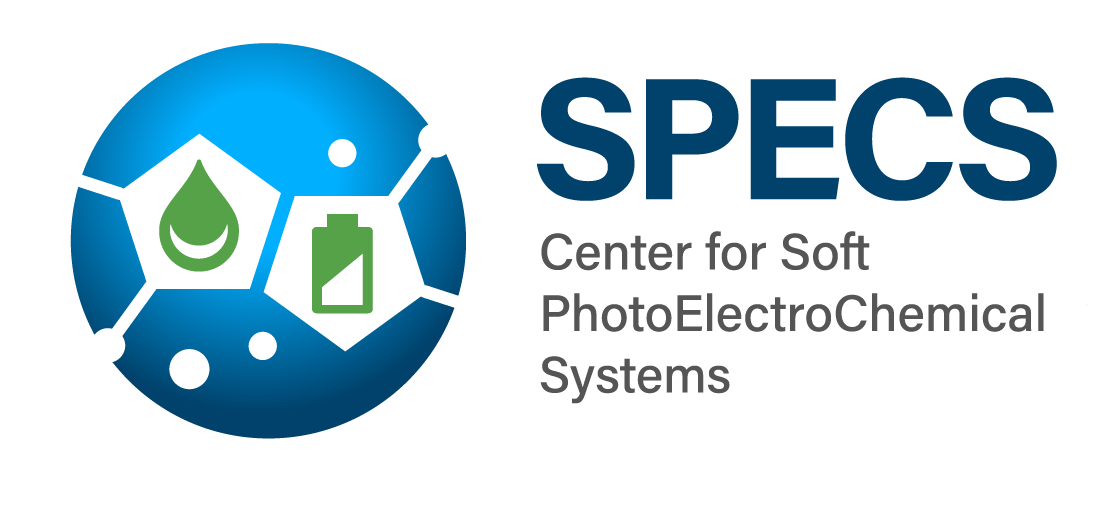Acknowledging SPECS
Properly acknowledging SPECS-funded research
Last updated: November 17, 2022
As of February 10, 2021, DOE BES has expanded the EFRC publication type to three categories: EFRC only, EFRC primary, and EFRC secondary.
Please follow guidance below to properly acknowledge SPECS in your publications. Any questions can be directed to Erin and Elisa.
- Decide whether the publication is best categorized as having support that is: "EFRC Only", "EFRC Primary", or "EFRC Secondary".
- See table below for example acknowledgement according to category.
More detailed guidance can be found in the EFRC Acknowledgements of Support Reference Document on the EFRC Community website.
EFRC Only
These can include support from individual student/postdoctoral fellowships or use of user facilities.
EFRC Primary
These are intellectually led by the EFRC, but some aspects were funded by other sources. The acknowledgements may include “primarily supported” to indicate that the EFRC provided the intellectual leadership.
It is important to clearly state which aspect of the research was funded under the EFRC and which other part of the work was supported by each of the acknowledged sponsors.
EFRC Secondary
These were intellectually led by an organization other than the EFRC. If the sole EFRC contribution was the use of EFRC-purchased equipment, they should not be reported as an EFRC publication.
Example Acknowledgements
EFRC Only
This work was supported as part of the Center for Soft PhotoElectroChemical Systems (SPECS), an Energy Frontier Research Center funded by the U.S. Department of Energy, Office of Science, Basic Energy Sciences at <institution of primary author> under award # DE-SC0023411 and at <insert name of National lab> under contract #<add contract number>. (add if applicable) YY acknowledges a graduate fellowship through the <insert name> foundation.
EFRC Primary
Research <insert “primarily” if appropriate and desired> supported as part of the Center for Soft PhotoElectroChemical Systems (SPECS), an Energy Frontier Research Center funded by the U.S. Department of Energy (DOE), Office of Science, Basic Energy Sciences (BES), under Award # DE-SC0023411 (polymer synthesis, transport measurements, spectroelectrochemistry, electron microscopy studies, computational studies, data analysis) and by the **collaborator*** (XX) under Contract # <insert grant award number> (extended duration testing). In addition, Investigator #1 acknowledges support by [fill in the blank] # <insert grant award number> (quantum tunneling measurement).”
EFRC Secondary
Work at the [Collaborating entity] was supported by the U.S. Department of Energy (DOE), Office of Science, Office of Basic Energy Sciences (BES), Solar Photochemistry Program under Award # <insert grant award number> (experiments). Work at University of Arizona was supported by the Center for Soft PhotoElectroChemical Systems, an Energy Frontier Research Center funded by DOE, Office of Science, BES under Award # DE-SC0023411 (theory and color impedance).”
EFRC Name = Center for Soft PhotoElectroChemical Systems (SPECS)
The Award No. is [DE-SC0023411]
DOE PAGES - FULFILLING COMMITMENT TO PUBLIC ACCESS
The following has been collected from the OSTI.gov FAQS document on DOE PAGES. More details can be found here: https://www.osti.gov/pages/faqs#how-do-publications-get-into-doe-pages
DOE PAGES helps fulfill DOE's Public Access Policy. Public access comprises the efforts of U.S. federal science agencies to increase access to unclassified scholarly publications and digital data resulting from federal research and development (R&D) funding. While OSTI has provided public access to DOE's unclassified R&D results throughout its history, the incremental change reflected in the DOE Public Access Plan is the addition of providing the full-text of DOE-funded scholarly publications, which OSTI makes publicly available within 12 months of publication.
The DOE Public Access Plan ensures the public has access to the published results of DOE-funded research by requiring researchers to submit metadata and a link to the full-text accepted manuscript or the full text article that developed from DOE funding to a designated DOE repository. DOE's Office of Scientific and Technical Information (OSTI) provides a web-based portal called DOE Energy Link (E-Link) for the submission of the metadata and a link to the full-text accepted manuscript or the full text article. OSTI then provides public access to publications through the DOE Public Access Gateway for Energy and Science (DOE PAGES). Requirements specify that (1) a minimum set of machine-readable metadata elements, comprising a metadata record, will be provided with the final accepted manuscript of a peer-reviewed scholarly journal article; (2) the accepted manuscript will be available for download, reading and analysis free of charge no later than 12 months after initial publication; and (3) the information will be managed to ensure long-term preservation.
INSTRUCTIONS TO SUBMIT TO DOE PAGES
DOE grantees (Financial Assistance Recipients) are to submit journal article accepted manuscripts through E-Link once the manuscript is accepted for publication, but no later than one year after the date the journal article is published online. Accepted manuscripts can easily be submitted to E-link via a submission interface in a simple step-by-step format. Through E-Link, researchers will submit metadata/citation information for the journal article as well as either an upload of the accepted manuscript or a link to the manuscript in a publicly accessible institutional or subject repository. If researchers have the DOI (digital object identifier) for the journal article, much of the metadata can be populated automatically. OSTI has prepared a video tutorial to demonstrate how to submit a manuscript. For more detailed instructions, they can refer to the DOE F 4600.2 in the terms and conditions of the award or the E-Link instructions.
Researchers at a national lab or other major DOE facility who have a manuscript accepted for publication in a peer-reviewed journal should use their lab's routine processes for scientific and technical information (STI) submission. Metadata/citation information for the journal article should be provided, as well as either an upload of the full-text accepted manuscript or a persistent hyperlink to the accepted manuscript in the lab/site's institutional repository. This procedure is comparable to the long-established submission process for technical reports and other types of STI. For more detailed instructions, please contact your lab or facility STI point of contact.

